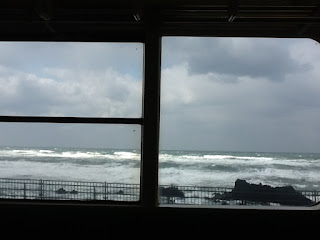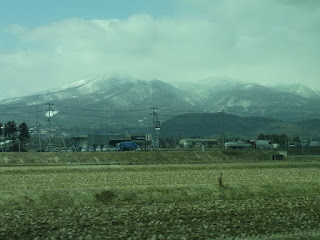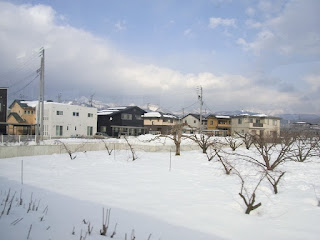In response to the Great East Japan Earthquake, we have removed coverage of the affected areas from this guidebook. However, we believe that travel in other parts of Tōhoku remains safe, with the caveat that you continue to stay informed on the latest developments.
This turned up on the Lonely Planet Thorntree this week, posted by Machiruda who used to live in Tokyo not long after I moved here. The Lonely Planet guide book no longer includes Iwate, Miyagi or Fukushima!!!!!!! What a disgrace.
In the words of Derryn Hinch, "Shame, Shame, Shame".
So much for their pontifications about letting people decide where is safe to travel. For the record most Iwate and Miyagi inland have never been unsafe for travel, both in terms of radiation and earthquake damage. Parts of Fukushima too are well outside the radiation exclusion zone. Once the trains and highway were fixed -the highways within a couple of weeks, the Shinkansen within 6 weeks, the area became accessible again.
The destruction on the coast has been phenomenal, but that doesn't mean it's unsafe to go there. It's a lazy cop out not to try and find accurate information and to keep updating it. The area excluded includes Sendai - one of Japan's biggest cities, the biggest city in Tohoku and stop off point for Matsushima and Yamadera, Matsushima - traditionally said to be one of the 3 most beautiful views of Japan and Hiraizumi which has just been made a World Heritage area.
Contrast this with JR East, who have done so well, not only with trying to get infrastructure operational again but to get people visiting the region as tourists. Admittedly their financial viability depends on profitable lines, but small local lines is not where they make their money. People in Rikuzen Takata that I spoke to seemed resigned to the fact that a train line was unlikely to be rebuilt. It seems that that plan is that they will be rebuilt, what additional precautions are being taken I am not sure. Infrastructure is essential if the areas damaged by the tsunami are revive.
Well done JR East! Keep it up!
In the words of Derryn Hinch, "Shame, Shame, Shame".
So much for their pontifications about letting people decide where is safe to travel. For the record most Iwate and Miyagi inland have never been unsafe for travel, both in terms of radiation and earthquake damage. Parts of Fukushima too are well outside the radiation exclusion zone. Once the trains and highway were fixed -the highways within a couple of weeks, the Shinkansen within 6 weeks, the area became accessible again.
The destruction on the coast has been phenomenal, but that doesn't mean it's unsafe to go there. It's a lazy cop out not to try and find accurate information and to keep updating it. The area excluded includes Sendai - one of Japan's biggest cities, the biggest city in Tohoku and stop off point for Matsushima and Yamadera, Matsushima - traditionally said to be one of the 3 most beautiful views of Japan and Hiraizumi which has just been made a World Heritage area.
Well done JR East! Keep it up!
 |
| JR Promotion on signboards at railways now - Iwate and the Sanriku Kaigan, featuring Iwaizumi, Jodogahama and Miyako |
 |
| A map with places to visit, and re-opening schedules for trains. |

















































